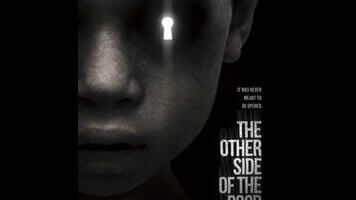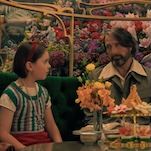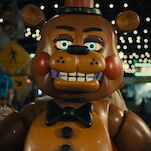For the sake of argument, let’s say you know about some secret channel between the world of the living and the world of the dead. Under no circumstances should this information ever be shared with a recently bereaved parent. No good can come from it. Jud Crandall learned that the hard way in Stephen King’s harrowing Pet Sematary, and so too does Piki (Suchitra Pillai-Malik), housekeeper for a mourning American family, in the not-screened-for-critics fright flick The Other Side Of The Door. Piki knows of a temple where people can say one last goodbye to their deceased loved ones, communicating through a barricaded door to the other side. “You must not open the door,” Piki warns Maria (Sarah Wayne Callies, the second The Walking Dead star to headline a horror flick this year), who can’t get over the drowning of her son. But what’s a mother supposed to do when she hears the disembodied voice of her dead child, pleading to be rescued from the dark and cold place he’s been deposited? What parent wouldn’t open the door?
Tempting though it is to put the spooky stuff that happens next entirely on Piki, no one should expect good judgement from a character whose sole purpose is to advance the plot. The Other Side Of The Door is one of those baldly metaphoric horror movies—like The Changeling or The Babadook or, yes, Pet Sematary, which it frequently resembles—that wraps grief management in the tattered shawl of a ghost story. If its investigation of loss and recovery isn’t exactly sophisticated, the film at least lays a solid emotional foundation: Maria, awakening from a flashback that morphs into a nightmare, strikes her husband Michael (Jeremy Sisto) for peacefully sleeping when the body of their drowned boy is barely cold. Their home in Mumbai, which they share with their surviving child (Sofia Rosinsky), is haunted long before Maria treks out to that darkened unholy place, accidentally releasing the angry spirit of her brood back into their lives. For once, the general refusal to take the supernatural threat seriously makes a degree of sense; Maria, who made the “Sophie’s choice” to pull her daughter out of the sinking car instead of her son, welcomes spectral Oliver back out of a mixture of love, guilt, and fear.
Of course, that’s primarily prelude. The Other Side Of The Door means mostly to jolt, through a series of variably effective jump scares. Why do so many modern horror films feel like they’re working from a checklist? Here, we get slamming doors, gusts of mysterious wind, an ominously mobile stuffed animal, a dog who can smell the trouble before his owners do, a self-playing piano, dead plants, and yet another eerily unfazed child carrying on conversations with the spirit that means to possess her. The money shots of screaming apparitions do the trick, for those shaken by harmless funhouse tactics. Less harmless is the way The Other Side Of The Door uses its specific cultural backdrop to provoke unease, vaguely exploiting Hindu spiritual tenets for the purposes of exposition and treating dark-skinned locals—their faces pancaked with chalk, their bodies gaunt, their fingers always pointing with accusation—as bogeymen. There’s an undeniable component of racial insensitivity to these scare tactics, though prominent references to Rudyard Kipling’s imperialist lit-classic The Jungle Book suggest that director and cowriter Johannes Roberts may know he’s playing with fire.
In privileging spring-loaded shocks over buckets of blood, movies like this one can look like healthy alternatives: They may operate by formula, but at least they don’t wallow in torture and degradation. Yet there’s an emotional sadism to The Other Side Of The Door that dampens some of its Friday-night fun; what we’re watching, once you tear back the layers of mumbo jumbo, is a B horror movie that revels in the ongoing suffering of a grieving mother, without offering the kind of deeper currents of feeling that elevate even, again yes, Pet Sematary. What’s on the other side of the door? Cruelty and old tricks, the latter not quite inventive enough to justify the former.









































